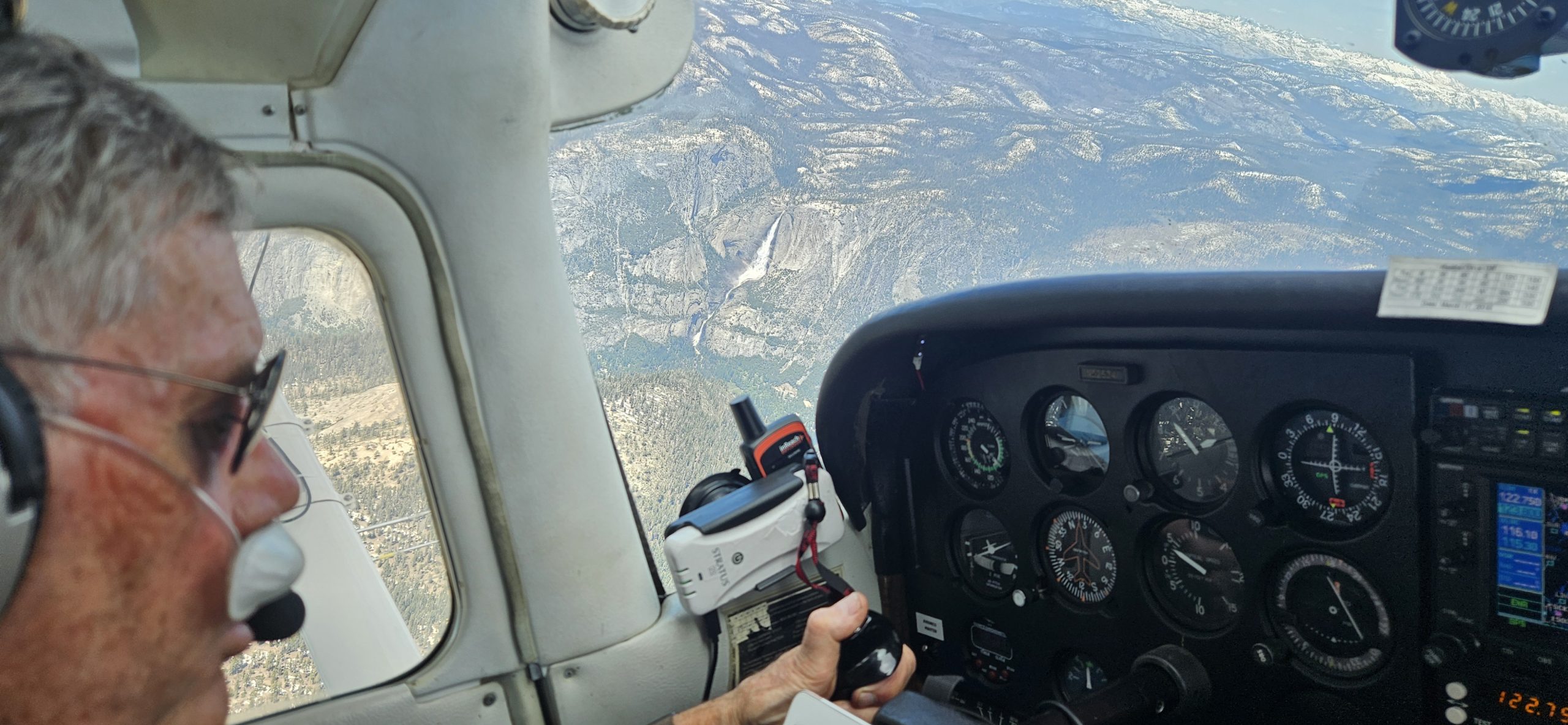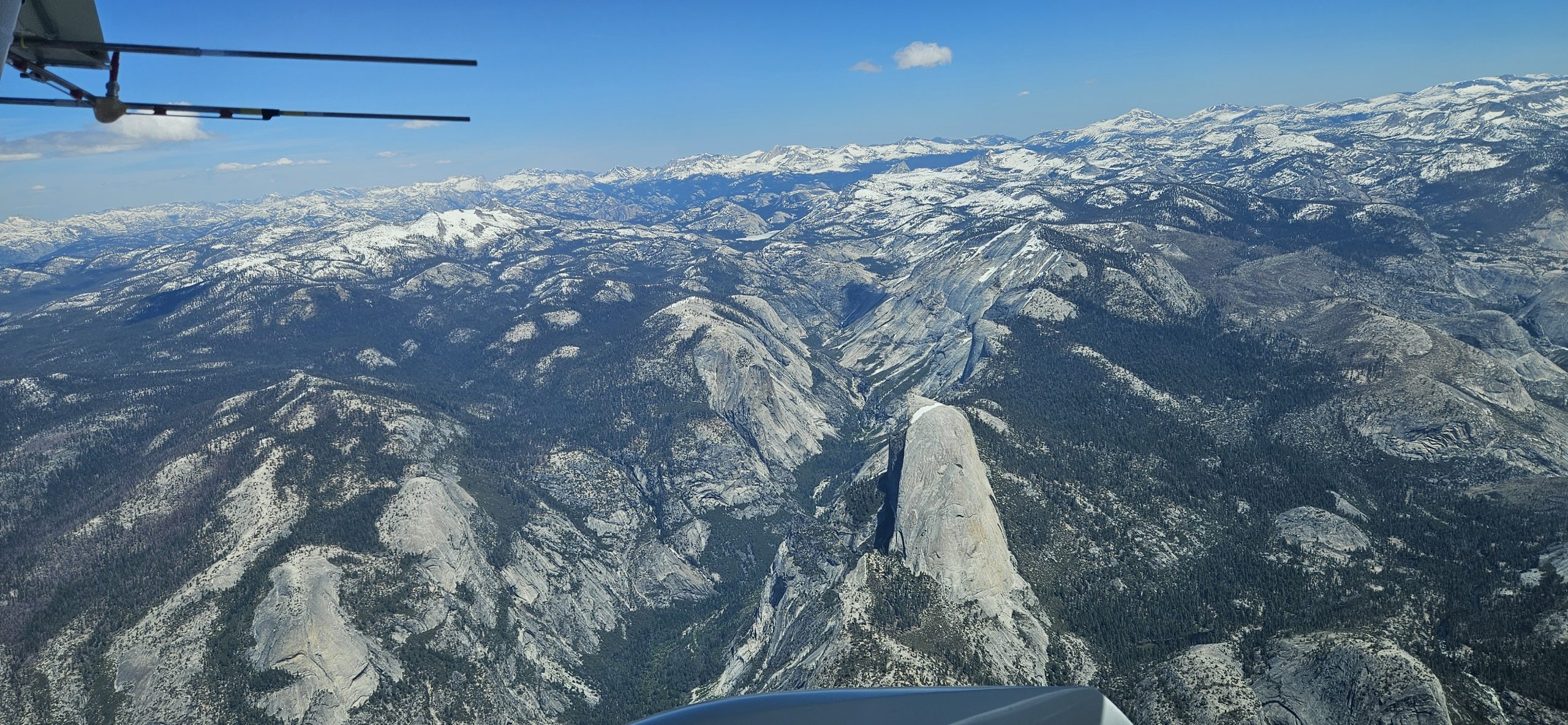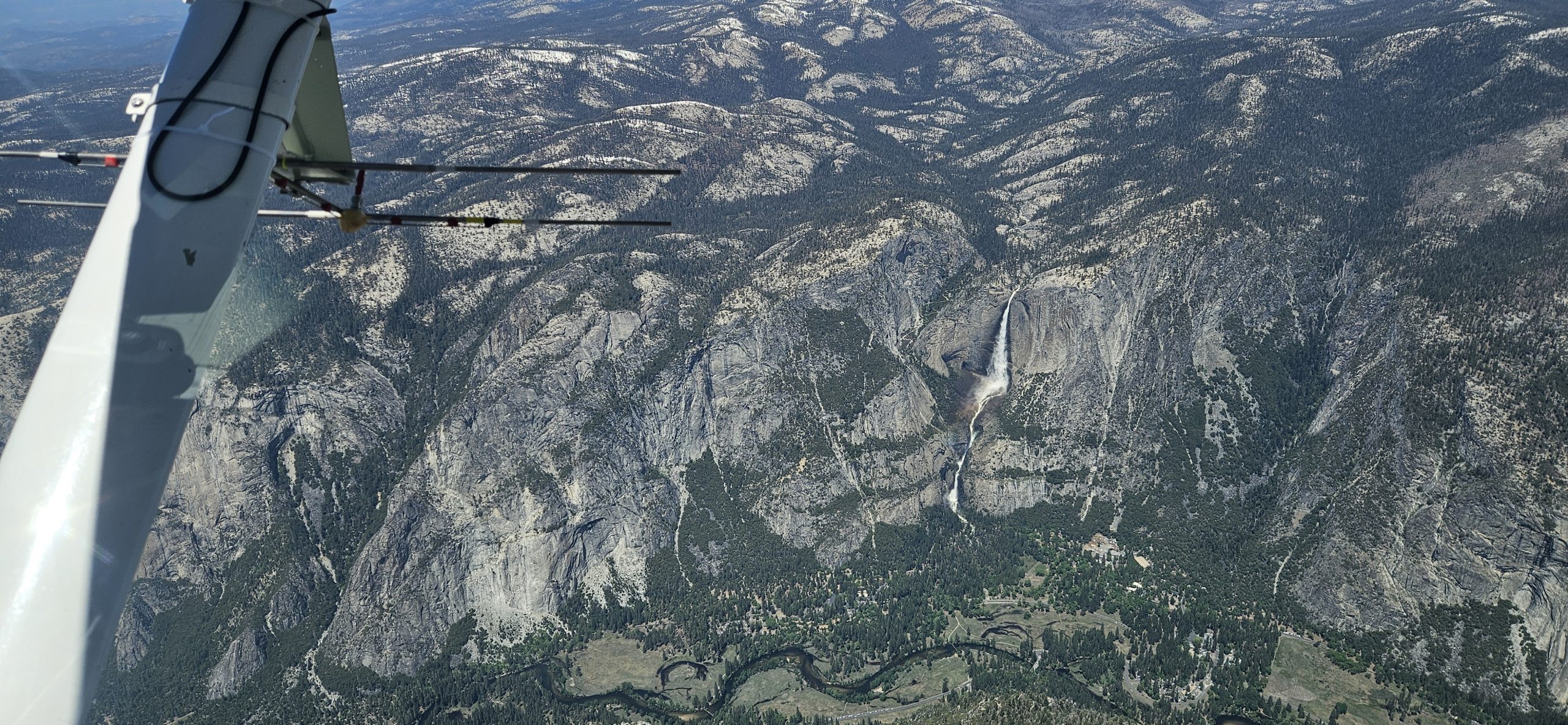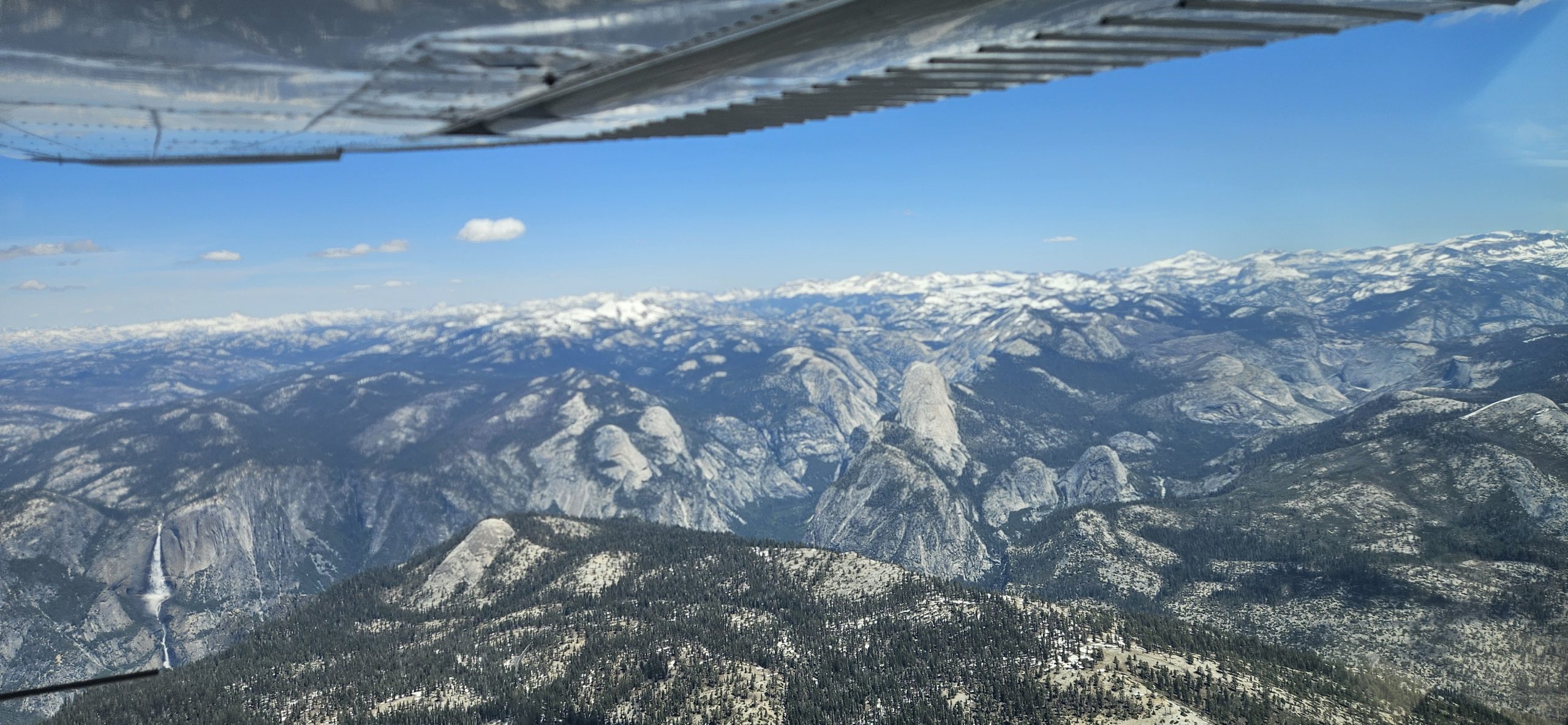
Flying over Yosemite National Park conducting aerial telemetry with park staff to locate a missing endangered fisher. Photo by Joe Medley.
When a young fisher known as M19 was released back into Yosemite National Park last year after recovering from injury, biologists outfitted him with a small tracking collar to monitor his movements and survival in the wild. But when M19’s signal went silent in December, Yosemite biologists and LightHawk quickly launched an aerial telemetry flight to help locate him.
Fishers are small, tree-dwelling carnivores that once thrived throughout Washington, Oregon, and Northern California. Today, they survive in only two isolated populations in California—one near the California/Oregon border and the other in the southern Sierra Nevada. Habitat loss, development, intense wildfires, vehicle strikes, disease, and exposure to toxic rodenticides have all contributed to their decline.
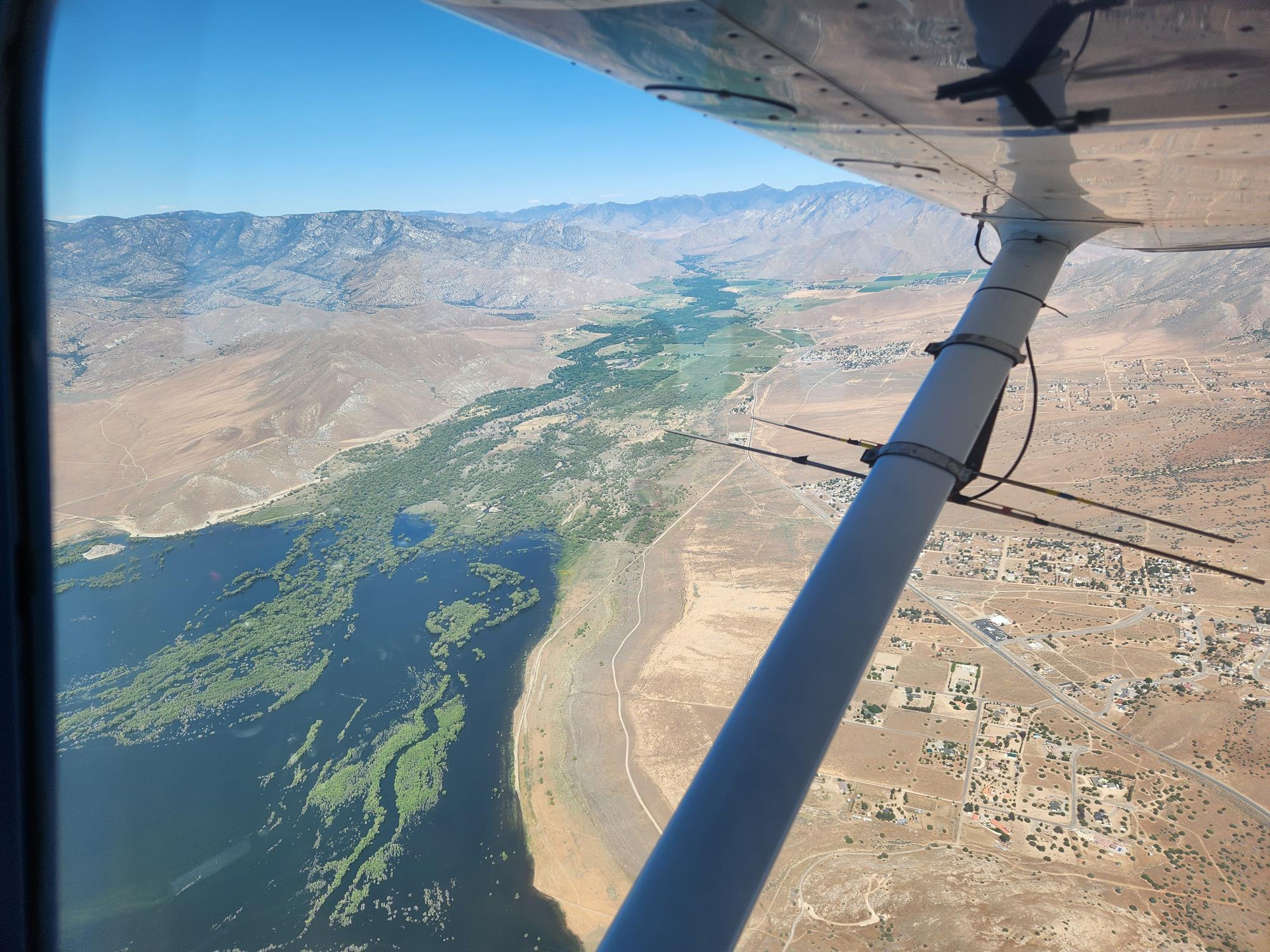
Antenna’s mounted to the wing strut can pick up signals from a fisher’s radio collar when they’re nearby. Flying a search pattern allows staff to cover ground quickly and efficiently. Photo by Joe Medley.
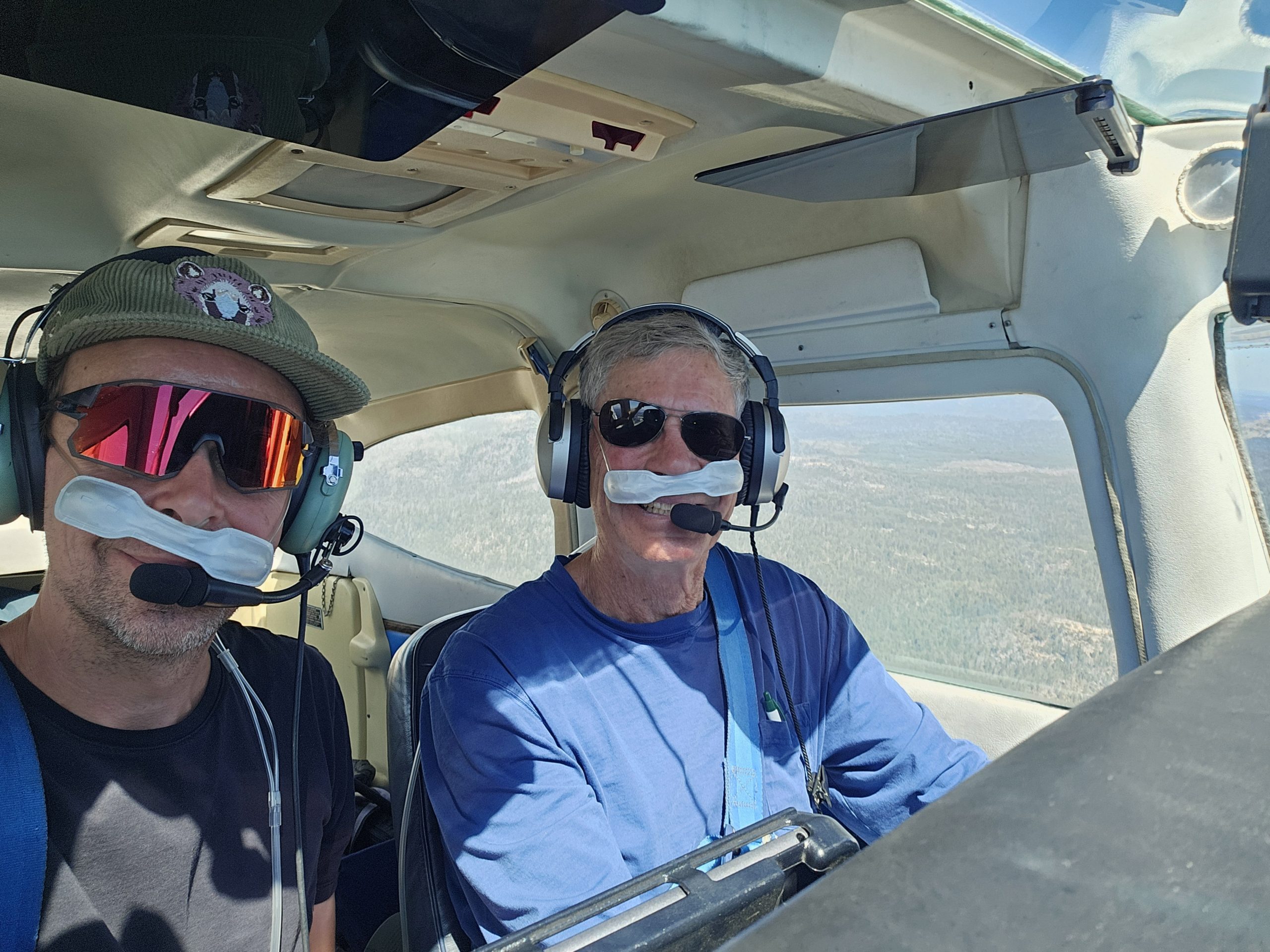
Partner Joe Medley and LightHawk volunteer pilot Mark Dedon work together in the search for the missing fisher. Photo by Joe Medley.
Biologists are working to better understand fisher behavior and habitat use, especially in areas affected by fire and tree mortality. Aerial telemetry plays a key role in this research, allowing teams to cover large, rugged areas quickly and efficiently. The data gathered helps inform land management strategies, including the use of prescribed burns to improve forest health and reduce the risk of catastrophic wildfires.
In early May, LightHawk volunteer pilot Mark Dedon once again flew over the park with a telemetry antenna mounted to his aircraft, scanning the landscape for signs of M19.
Although M19 was not located during this flight, LightHawk is working closely with Yosemite National Park staff to schedule additional flights. The team also hopes to locate six other fishers whose collars have recently gone silent.
Flying over Yosemite National Park provides some stunning views, like this waterfall. Despite teh goregous landscape, the flight provided valuable data for scientists tracking fishers in the park. Photo by Joe Medley.
This mission highlights the value of aerial monitoring in advancing species recovery. LightHawk flights help stretch limited resources and provide essential data to guide smarter conservation decisions. LightHawk is saving time, saving resources and saving fishers!
Thank you to volunteer pilot Mark Dedon for lending your time and skills to this effort. Your support continues to play a vital role in protecting wildlife from above.
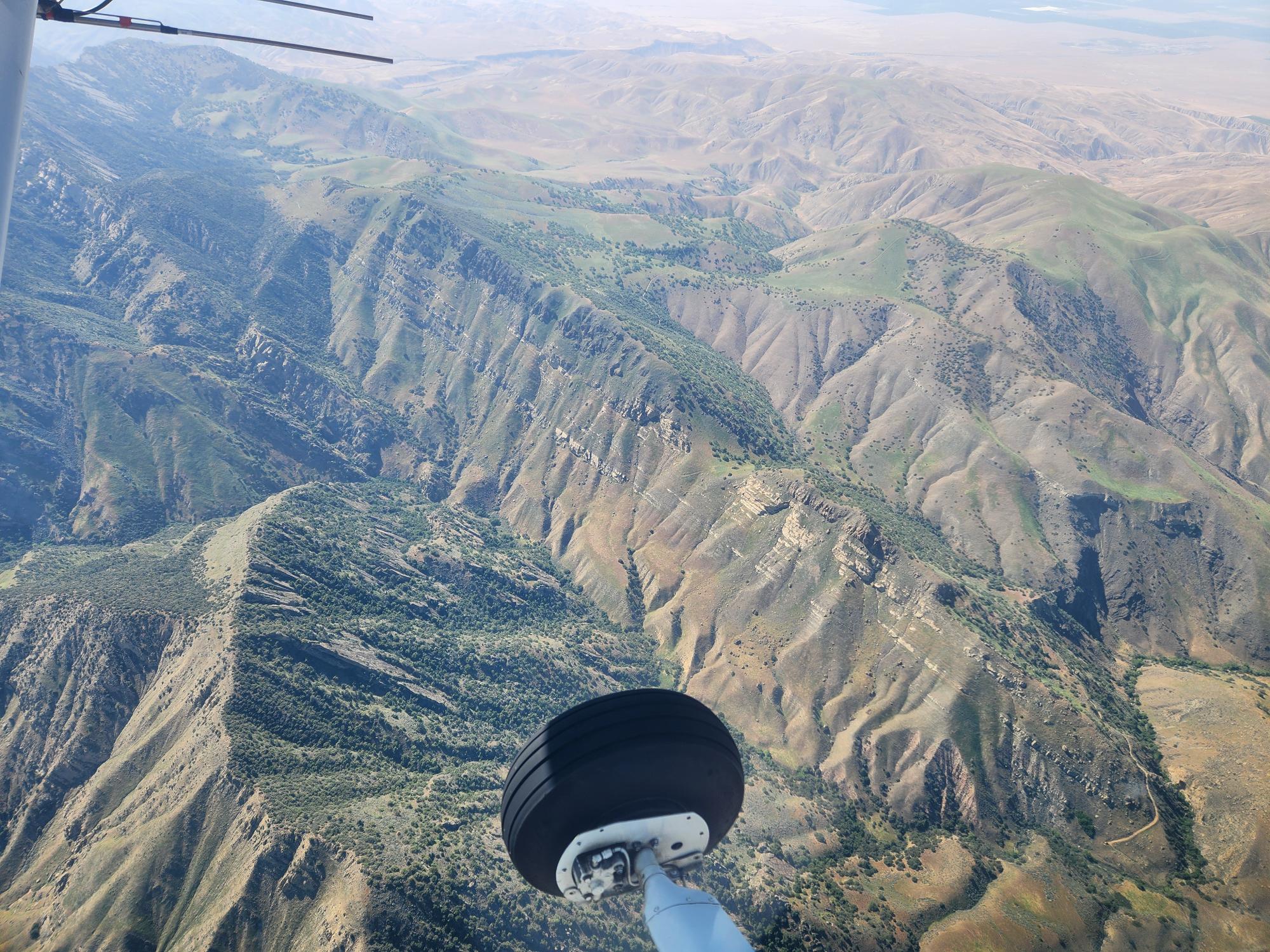
Fishers can be in rugged terrain, making locating them from the ground difficult or even impossible. Using aerial telemetry allows scientists to cover the same area quickly and safely. Photo by Joe Medley.

